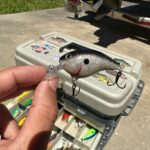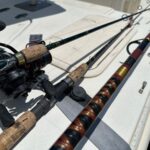The salmon and trout family salmonidae is well known for taking anglers to some of the world’s most beautiful and pristine aquatic environments in pursuit of equally stunning fish.
But not all beauty is natural; one of North America’s most sought-after trout varieties is, in fact a human creation!
Whether you call it a lightning trout, a Centennial trout, or simply a banana, this radiant salmonid’s striking yellow coloration sets it apart from many of its natural cousins.
So let’s go prospecting for some facts about the birth, spread, and current angling scene of the iconic Palomino trout.
This page contains affiliate links. As an Amazon Associate, I earn from qualifying purchases.
Table of Contents
So what exactly is a Palomino Trout?
A Palomino Trout (Oncorhynchus mykiss), is a hybrid fish that results from a cross-breed between a rainbow trout and a West Virginia golden trout. Its deep yellow coloring is a combination of the intense gold color from the West Virginia golden trout and the subdued streaks of the rainbow trout.
And because of its eye-catching features, you’ll probably become mesmerized once you see it and will likely spend your entire day fishing for it!
In short, Palomino trout are a specially colored variation of the much more widely known rainbow trout (Oncorhynchus mykiss).
While the color is the only major difference between Palominos and normal rainbows, it’s quite a dramatic one!
This fish’s eye-catching features are known to send anglers of all stripes (myself included) into a frenzy when it’s spotted, and many will dedicate their whole fishing trip to getting one on the hook.
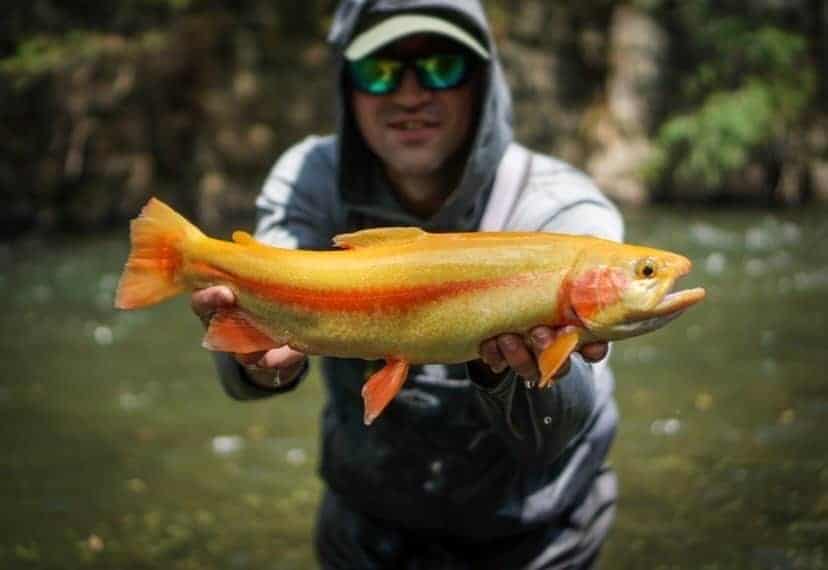
While the breed got its start in West Virginia, many other state wildlife departments across the US like to get in on the fun by stocking Palominos in their waters along with standard rainbow trout for fisherfolk to target.
They are often considered to be the crown jewel of trout season in the areas where they’re stocked!
Palomino Parentage: Where’d They Come From?
The history of this strange and colorful fish is the subject of much confusion among anglers. Some people will tell you they’re a hybrid of multiple trout species, and others claim it’s a wholly unique natural species.
It doesn’t help that there exists a naturally golden subspecies of rainbow trout called the California Golden Trout (Oncorhyncus mykiss aguabonita) that lives in a very small section of remote mountain wilderness out West.
This extremely rare lineage is completely separate from our Palomino friends, despite the similar name and shared rainbow trout parentage.
There’s a lot of confusion about names too. To be clear, Palomino trout and golden rainbow trout are indeed the same variety of fish! States outside of West Virginia aren’t allowed to call them Palominos for regional branding reasons, but the fish are descended from the same lineage.
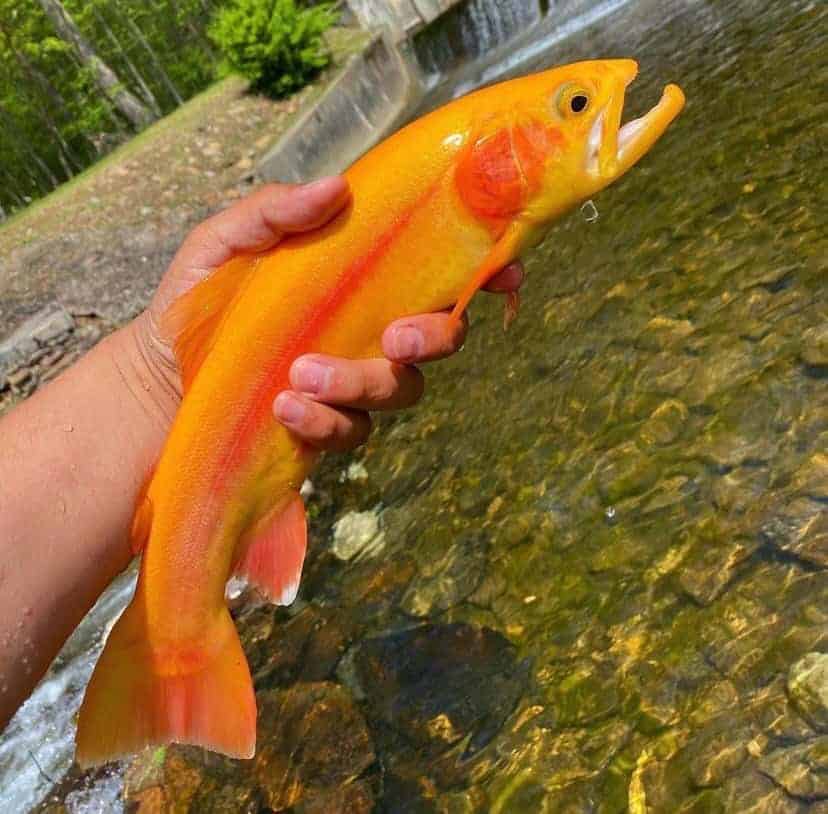
Suffice it to say, nobody’s blaming you if you’re confused about this fish. The absurdly large number of names they’ve been given certainly doesn’t clear anything up either!
The true origins of the Palomino trout date back to the 1950’s and stem from the Mountain State, West Virginia. This fish got its start in the same place you’ll find most of them today: trout hatcheries!
Little Camoflauge and the Dawn of the Golden Gene
Our story begins in 1949, when West Virginia’s Petersburg State Trout Hatchery received 10,000 tiny rainbow trout fry from the White Sulfur Springs Federal Hatchery.
While these fish were descended from rainbow trout living in California, they were not related to the elusive golden trout that live in the state naturally. These were your standard silver and pink trout, which are still naturally beautiful in their own right!
This natural beauty, and the demand it created, is what prompted Petersburg Hatchery to start hatching the trout in the first place.
An unfortunate die-off caused the 10,000 fish to be reduced to a mere 300, but a brood stock was created from the survivors all the same.
Perhaps the reduced gene pool caused by this event contributed to what happened next, but that’s only speculation.
However it happened, in 1955 a DNR fish biologist was monitoring the newly hatched trout when they noticed one of the fry sporting some peculiar golden spots that none of its brethren had!
They were so enamored with this mutant fish that they gave it its own name, “Little Camoflauge,” and separated it from the rest of the trout to be specially raised.
A New Golden Age
As Little Camoflauge grew, its spots merged into a bright golden stripe on its sides. When the biologists found out the trout was a female, they were fascinated by the possibility of breeding her to pass on her unique mutation and get more golden fish!
900 of Little Camoflauge’s eggs were fertilized by normal rainbow trout males, but the fry didn’t seem to take after their mother.
The babies were mixed back in with the other trout, but later that winter it was discovered that 300 of them did end up turning gold as they grew!
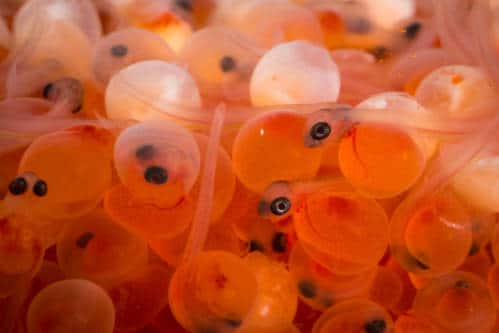
The fish were quickly re-separated and an intensive breeding program was started.
Over the following years, the West Virginia DNR was able to produce the brilliant yellow strain that we now know as Palomino trout.
They were first introduced to the public in 1963 to celebrate the state’s 100 year anniversary (hence the name Centennial trout), and 1 Palomino trout was stocked for every 10 normal rainbows.
The fish were tagged, and anglers who caught them could get a prize by turning the tags in!
This event, called the West Virginia Gold Rush, continues to this day, and attracts anglers from all over.
But they aren’t only found in West Virginia; the state currently refuses to export Palomino eggs, but a few were sent to other states in the early years (on the condition that they couldn’t be called Palominos).
This allowed breeding programs to kick off across the U.S.
States such as Maryland, Pennsylvania and Oklahoma all stock this marvelous fish for anglers to enjoy, along with several others! Check online to see where they can be found near you.
A Golden Bullet: Where Beauty Meets Strength
Palomino trout are extremely easy to identify by their bright gold-yellow coloration. The exact shade varies depending on the conditions and brood stock at whatever hatchery it came from, but nothing else looks like it!
They have no spots, and the only marking on their body is a pink band running down their sides, a reminder of the classic rainbow trout they came from.
These fish aren’t just prized for their beauty, of course. They grow just as large and fight just as hard as any other rainbow trout, making it an amazing game fish!
Hatchery trout are usually released at 12 inches long but can grow up to 30 in some cases with weights pushing 4 pounds. In extremely rare cases, they can grow to several feet long and over 10 pounds!

How Big Do They Get?
In terms of size, the Palomino Trout is of similar size to the normal Rainbow Trout but it’s not unusual for them to grow larger.
In fact, they tend to grow much faster and will end up larger than the Golden Trout. They commonly measure 12-30 inches long and can weigh between 2 and 10 pounds.
The average size Palomino Trout is between 15-19 inches and weighs between 2 and 4 pounds.
Catches over 10 pounds are rare, but they do happen!
Where to Find Palomino Trout
Given its close association to the conventional Rainbow Trout, Palomino Trout has similar habitat preferences to other freshwater Rainbow Trout.
Palomino Trout are “fast water” fish; they prefer living in swift areas of streams, rivers, and creeks. However, they have been successfully stocked in small lakes and ponds as well.
If your goal is to catch a Palomino Trout, head to Pennsylvania. Specifically, check out Lyman Run State Park, Hay Creek, and Mohining Creek.
But many anglers are not keen on giving up their Palomino honey holes…and who could blame them?
Fish hatcheries, especially in Pennsylvania, Maryland, and West Virginia artificially breed and hybridize rainbow trout and regularly stock them in surrounding water bodies.
These stocking schedules change each year, so it’s always best to consult with your local DNR office.
What Do Palomino Trout Eat?
As far as their diet is concerned, the Palomino Trout are mainly carnivores and have the same diet as any conventional Rainbow Trout.
Their diet consists mainly of insects and invertebrates such as crawfish, fish eggs, mollusks and worms. They can also feed on small crustaceans while larger adult Palomino Trout may also feed on smaller fish as well.
In terms of their predators, the Palomino Trout is a huge target for human anglers who pursue them mainly as trophies. They can also be targeted by osprey, bass, pike, otters, and blue heron.
How to Catch Palomino Trout
As mentioned earlier, spotting the Palomino Trout is easy if you look at the right places. However, they’re much more difficult to catch as they are elusive, fast, and love hiding in shady areas.
Look for deep pools, blowdowns, and eddies adjacent to large rocks or ledges. Like most trout, these fish prefer to hold near structure and ambush bait as it moves through the water column.
The popularity of Palomino Trout and Golen Trout has exploded in recent years which means pressure from anglers has too. These fish are weary!
Pressure from other anglers is often the most difficult factor to overcome when targeting Palomino Trout. Below are a few tips:
- Get up early! Be the first angler on the water, well before the crowds and the sun gets overhead.
- Keep a close eye on the stocking schedule of trout in your area. Plan your trip accordingly!
- Focus on hard to access areas. Walk that extra mile, or put on the hip waders. Fish will be most pressured in easy to access areas off roads where parking is available.
- Change out your baits. These fish are picky and if you dont get a bite in 2 or 3 drifts or casts its time to try something new.
- Downsize your tackle. The smaller the better! When other anglers throw big streamers and globs of eggs, try something a like a single bead or 1/32 oz tipped jighead.
- Avoid shadow casting. Ask yourself, “where is the sun, and will the fish see my shadow?” plan you approach carefully, you may only get one cast before he spooks.
Palomino Trout Tackle
My Bait & Lure Recommendations:

Blue Fox (or similar inline spinner)

Pautzke Fishing Bait Scented Artificial Salmon Eggs Fish

Trout Magnet Neon Kit
My Rod and Reel Recommendations:

Redington Fly Fishing Combo

Cadence CC4 Spinning Combo
Here’s a great place to learn more about different types of fishing reels that can help you catch the Palomino Trout, or any type of fish.
Frequently Asked Questions (FAQs)
Are Palomino Trout Good to Eat?
Yes, Palomino Trout are good to eat if you like the taste and texture of Rainbow Trout. Their meat is a tad more orange/pink than a normal rainbow trout but the flavor is the same.
Are Palomino Trout rare?
Because Palomino Trout are primarily stocked by fish hatcheries, and seldom found in the wild many anglers do consider them rare. They are found in select locations around the United States and prized by fly fishermen and conventional anglers.
Are Palomino Trout sterile?
No, Palomino Trout are not sterile but natural reproduction in the wild is limited to a few watersheds in the Northeastern United States.
Are Palomino Trout Fun to Catch?
Palomino Trout are a lot of fun. First you have to spot the fish, and when they bite they are known for good strong runs and even jumps. Plus, they make an amazing photo!
Are Palomino Trout Available Throughout the United States?
The Palomino Trout are not available throughout the United States. This is because they’re artificially bred and stocked in the wild. The most popular states to find them are Pennsylvania, West Virginia and, Maryland.
Final Thoughts
The hardest part of catching a Palomino trout is getting one on the line in the first place, but you’re still in for a hard-fought battle afterwards!
Landing one of these golden beauties is a bucket list-angling achievement for sure.
As always, the best way to boost your odds is to get out there wherever and whenever you can- you won’t pull any fish out from inside your screen!
When you finally strike gold on the water, thank West Virginia and its expert trout breeders for providing us all with an angling opportunity that isn’t quite like any other out there.
If you haven’t guessed yet, I love fishing and everything about it!
To learn more about why I started Panfish Nation, visit the About page and follow along on Social Media:


Download a copy of my FREE Lure Color Selection Chart & Knot Guide!
Stay up to date with fishing reports, tackle reviews, industry news, and much more! We respect your privacy, unsubscribe at any time.
Related Posts
- Crazy Facts About the World Record Crappie
- What Size Hooks for Smallmouth Bass? Quick Guide
- Large and in Charge-Mouth: 10 of the Best Bass Lures of All Time (And Where to Buy Them)
- Emperor of the Sun(fish): What You Need to Know About the World Record Bluegill
- The Seven Best Lures for Fall Bass Fishing
- Which Fishing Line is Best for Bass Fishing With A Spinning Reel?





